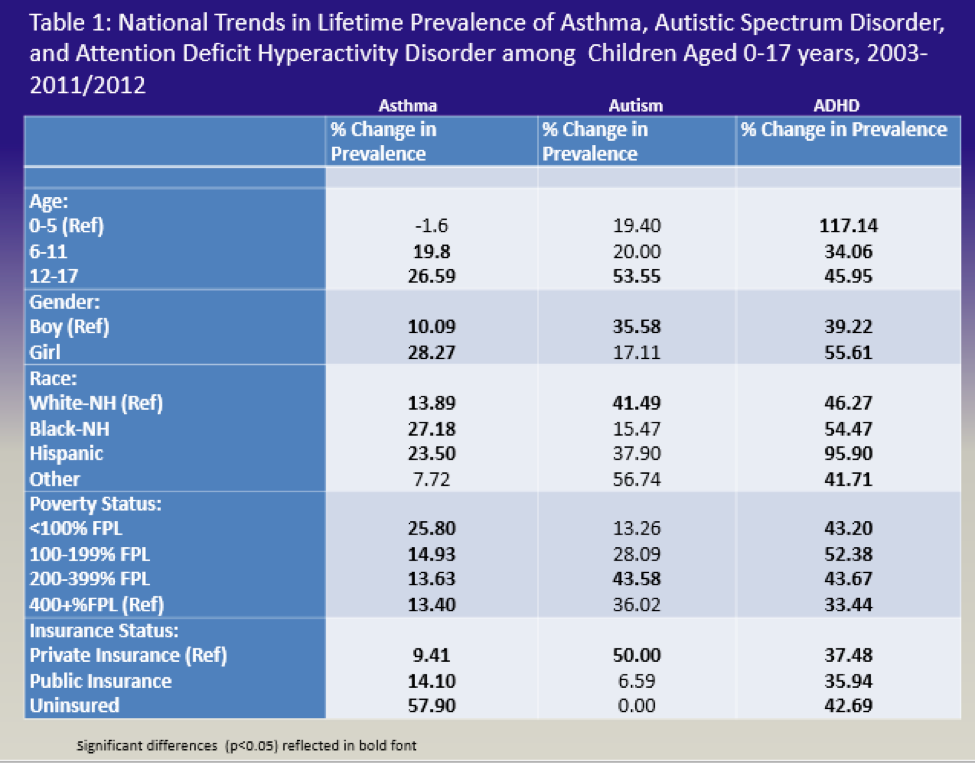Article
2 Chronic Health Conditions on the Rise Among Children
Author(s):
Chronic health conditions are on the rise among children, especially those living in poverty.
Chronic health conditions are on the rise among children, especially those living in poverty.
New research presented at the Pediatric Academic Societies 2016 Meeting examined trends in the prevalence of 3 common childhood conditions: asthma, attention-deficit/hyperactivity disorder (ADHD), and autism.
The researchers conducted secondary analyses of the National Survey of Children’s Health from 2003, 2007, and 2011 to 2012, and they found that the 2 conditions with significant changes in prevalence between 2003 and 2011-2012 were asthma and ADHD.

Study author Christian D. Pulcini, MD, MEd, MPH, from the Children’s Hospital of Pittsburgh of UPMC, told Pharmacy Times that the most surprising finding was the increase in comorbid conditions among children with asthma who were living below the federal poverty line.
“I did not expect that drastic of a difference, especially because we do not have a mechanism to explain why there has been such a large increase,” Dr. Pulcini said. “We can postulate environmental factors, including that poverty itself may contribute, but we have no objective data at this juncture to suggest this is the case.”
Dr. Pulcini and his colleagues discovered several other notable findings:
· Children living in extreme poverty who had asthma and ADHD were about twice as likely to have at least 1 other chronic condition, such as developmental delays, autism, depression, anxiety, or issues with speech, language, or behavior.
· Children with autism had more than 4 times the number of comorbidities than children with asthma.
· The data suggested that as poverty increases, so do comorbidities.
· For children with autism, increases in prevalence and comorbidities were similar across all income levels.
“In regard to pharmacists being involved in preventing and treating these conditions, it is of vital importance for health care providers and teams to work together to identify and treat these conditions especially with children in poverty,” Dr. Pulcini said. “Pharmacists play a vital role in their communities as educated leaders and health care providers, and if committed, they could truly make impactful change within any community in which they practice.”
One way pharmacists could help is by monitoring comorbid conditions among children with ADHD and asthma, especially if they know the family struggles financially.
The researchers posited that more studies should be conducted to ensure these children receive adequate health services based on their diagnosis, comorbid conditions, and socioeconomic status.
“It will also be important to differentiate whether comorbidities emerge from untreated primary care conditions, survival of more medically complex children, or social determinants of health,” they added.
In order to address these complex medical needs, policies are needed to support health care providers, medical homes, and children in or near poverty. The American Academy of Pediatrics (AAP) recently issued a policy statement that recommended health care providers screen for poverty at check-ups.
Almost half of the young children who live in the United States live in or near poverty, according to the AAP. Living in poverty can increase the likelihood of infant mortality, poor language development, obesity, and injuries.





